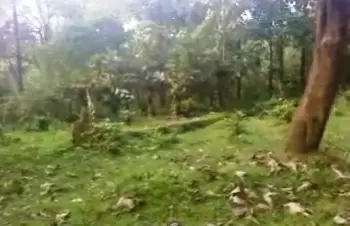Officials step in to save Kerala’s only tribal village from environmental degradation
18-April-2012
Vol 3 | Issue 15
Tucked away inside a heavily forested area, Kerala's only Scheduled Tribes (ST) panchayat Idamalakkudy is home to some of the world's most endangered plant species but the rich biodiversity is fast dwindling as is the tribals' unique way of life, say worried researchers.
Spread over 106 sq km area in Idukki district, about 270 km from here, Idamalakkudy has a population of 2,236 -- comprising 1,196 men and 1,040 women -- heavily dependent on the forest for food, medicine and shelter.
 |
|
Locals have started using tin sheets as roof and cement blocks for the walls causing concern among officials (Photo for representation purpose only)
|
A 20-member team of the Kerala State Biodiversity Board (KSBB) returned here Tuesday after spending five days in the village, accessible only on foot with vehicles having to stop some 20 km away, and found to their dismay that numerous medicinal plants found in the area were fast depleting.
"We will soon work out immediate intervention to control and conserve medicinal plants. The depleting medicinal resources should not be harvested for trade for the next three years in order to conserve the precious resources. It is unscrupulous middlemen who exploit these tribals," said K.P. Laladhas, who led the team.
Stressing that traditional medicines were their strength, Laladhas said: "Women are extremely dependent on them for safe childbirth. These women return to active work just a few weeks after delivering their babies."
Their homes are traditionally built using forest wood, mud and locally available grass.
"What is a matter of concern is that local self governments have now started using tin sheets as roof and cement blocks for the walls. This is unmatched technology to be used in the forests and we will see what we can do to see how we can prevail upon local authorities not to undertake this type of construction," said Laladhas.
Another cause of worry in the social sphere is the high consumption of tobacco. Almost 85 percent use tobacco, including children as young as seven.
"The need of the hour is for immediate intervention by health experts to launch a massive anti-tobacco campaign in the village because already the ill-effects of the use of tobacco are seen on them," added Laladhas. - IANS














